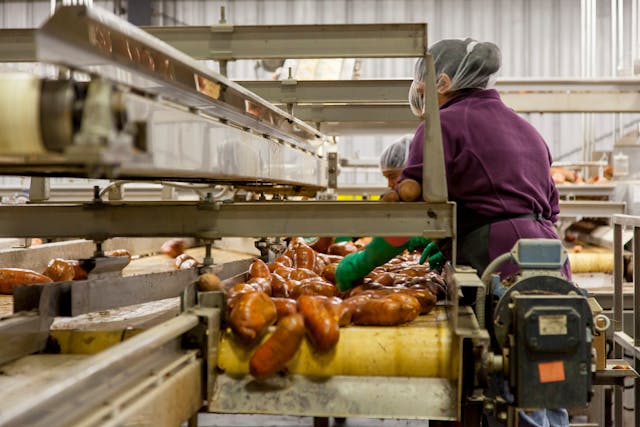
Creating the perfect food processing system might be intimidating due to the industry’s complexity and diversity. The physical characteristics of the food being handled, the processing techniques employed, and the hygienic measures taken to stop the spread of illness are just a few of the numerous variables that will impact system design.
Take into account the Particular Features of the Food Being Processed.
The design of the metal belting will be significantly influenced by the kind of food being delivered and its physical properties. For instance, belts used to chop or dice food goods need to have a sturdy surface that will stay intact. Therefore, belts made of rubber, plastic, wire, or mesh are the only suitable materials. Other procedures, like icing boxed cupcakes, call for careful handling and exact placement during preparation.
Conveyor belts made of solid metal have unique properties that can be used to maximize performance.
For food processing plants, stainless steel metal belt conveyor systems are an easy and apparent choice because of their many advantages. Stainless steel is a multipurpose metal that has a high level of resistance to temperature fluctuations and corrosion. Stainless steel conveys heat very well due to its high thermal conductivity, which makes stainless steel conveyor belts a dependable option for procedures where food is cooked directly on the belt. If required, a range of alloys can be used to optimize the belt’s resistance to excessively high or low temperatures.
Conveyor belts made of stainless steel do not produce particles or outgas or need to be lubricated like conveyor belts made of plastic or rubber do. This significantly lowers the possibility of contamination by foreign particles while also assisting in preserving the intended flavor of food goods. Mesh metal belts include gaps where germs and other particles might gather, and they may break or lose links in the products.
Stainless steel metal belts are more hygienic than other belt materials because bacteria and germs do not like their smooth surface. Because stainless steel conveyor systems are resistant to high temperatures and corrosive chemicals, they may be cleaned affordably using a range of techniques, such as high-pressure steaming, high-pressure cleaning, and chemicals.
The Design of Metal Conveyor Systems Can Be Affected by Environment
The design process also takes into consideration the environment in which the device will be deployed. Conveyors used in food processing should be designed to allow surfaces to be rapidly and easily exposed for inspection, maintenance, and cleaning. The necessity for the food product to be transported and processed, as well as the surroundings of the belt, determines whether the system is designed to be cleaned in or out of place.
Make Sure the Automated Conveyor System for Food Processing Complies with the Most Up-to-Date Quality Standards.
When it comes to quality and safety, the food processing industry is among the most closely regulated. The FDA recently published an updated set of food processing guidelines as part of the Food Safety Modernization Act (FSMA), with the goal of preventing contamination and the spread of illness within the food sector. The original architecture of food processing systems and their compliance with hygienic requirements are the main topics of these new laws.
Because stainless steel is by nature more hygienic than other conveyor belt material choices, it is considerably easier to comply with FDA regulations.
A professional conveyor belt manufacturer can assist you whether you’re looking to modify an existing system for better product quality and safety or you’re looking to install a brand-new conveyor system for food processing. You can examine the elements that will most affect the layout of your automated food processing conveyor system by using their extensive checklist.
Explore the world of inventive conveyor solutions at Wire Belt! Discover how our cutting-edge technologies can revolutionize your food production processes.
Interesting Related Article: “Food processing: Understanding the trends shaping pet nutrition“

